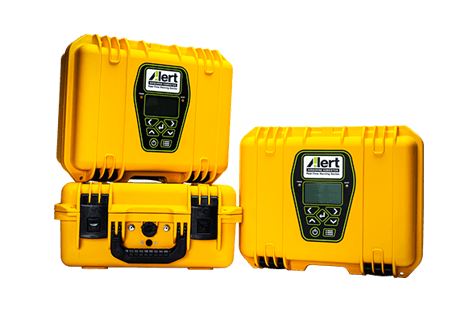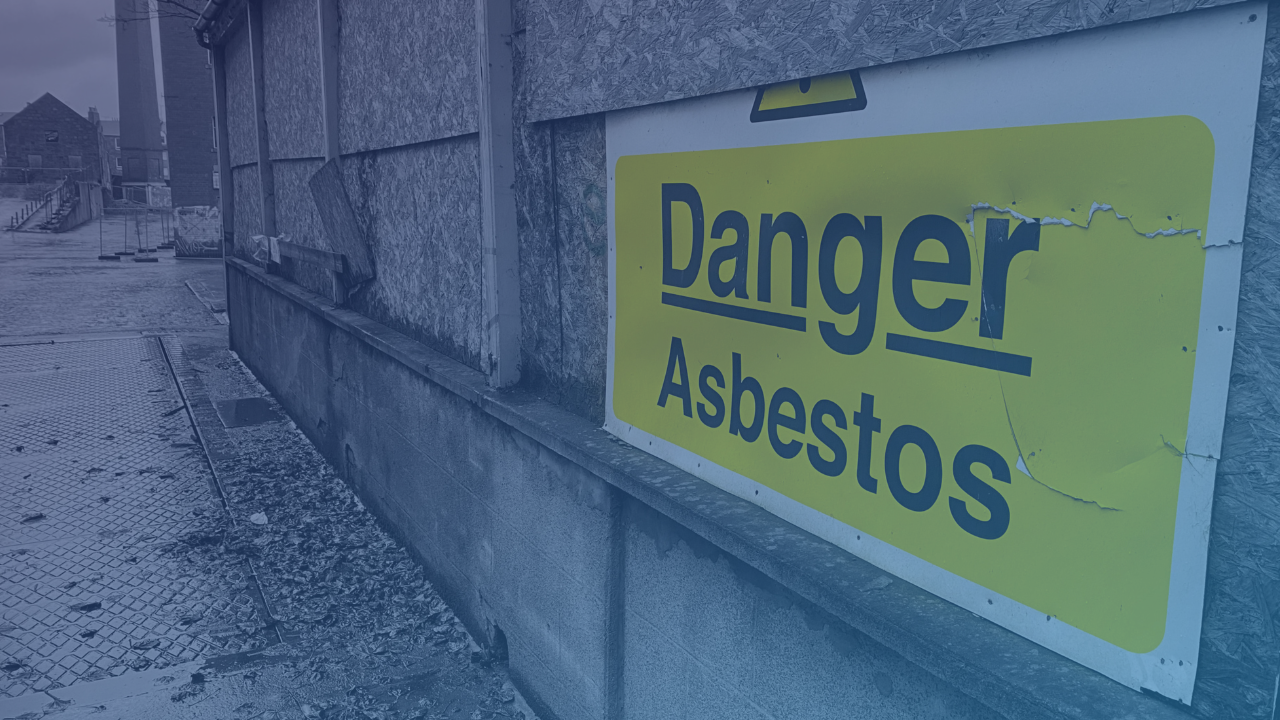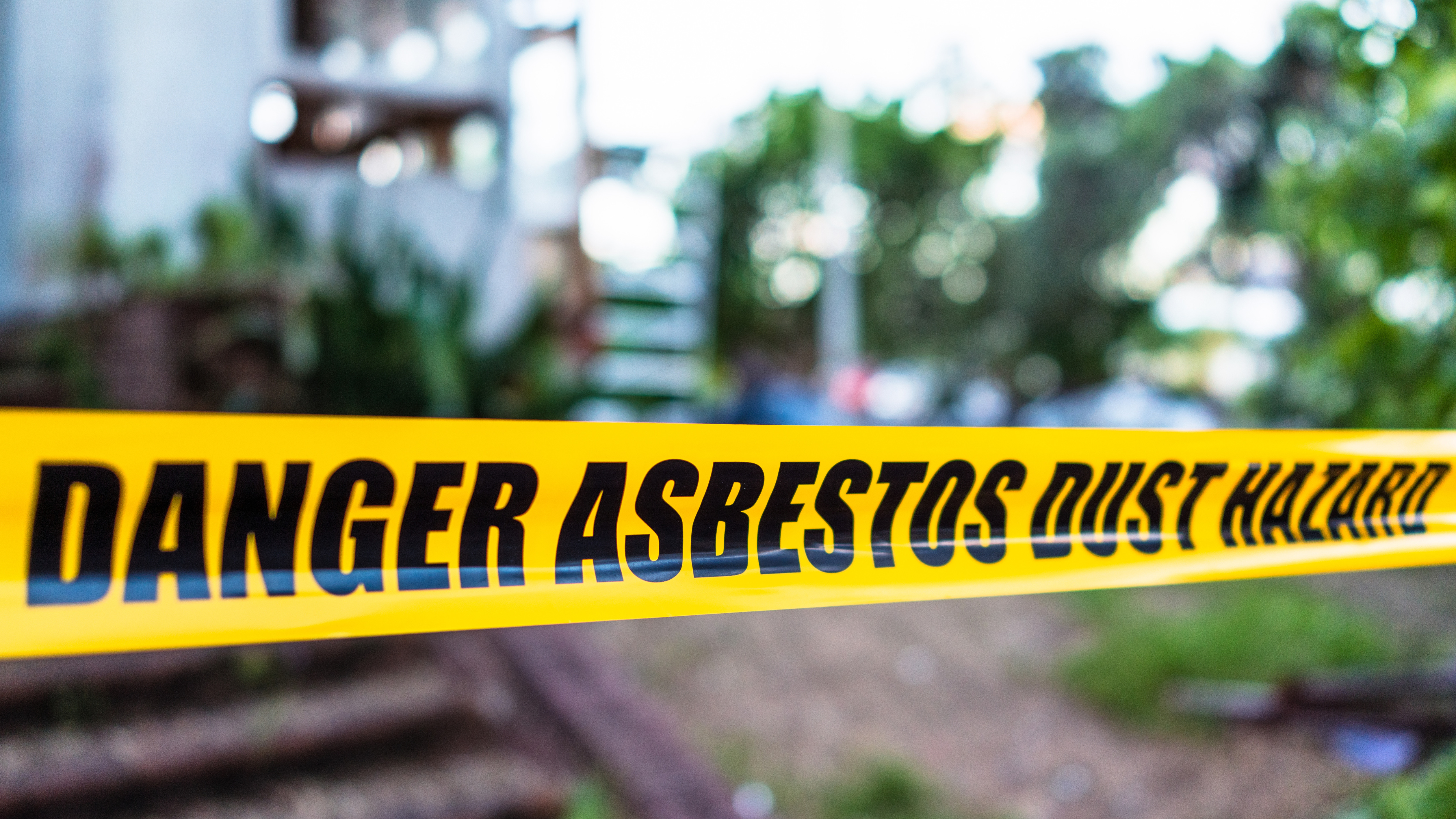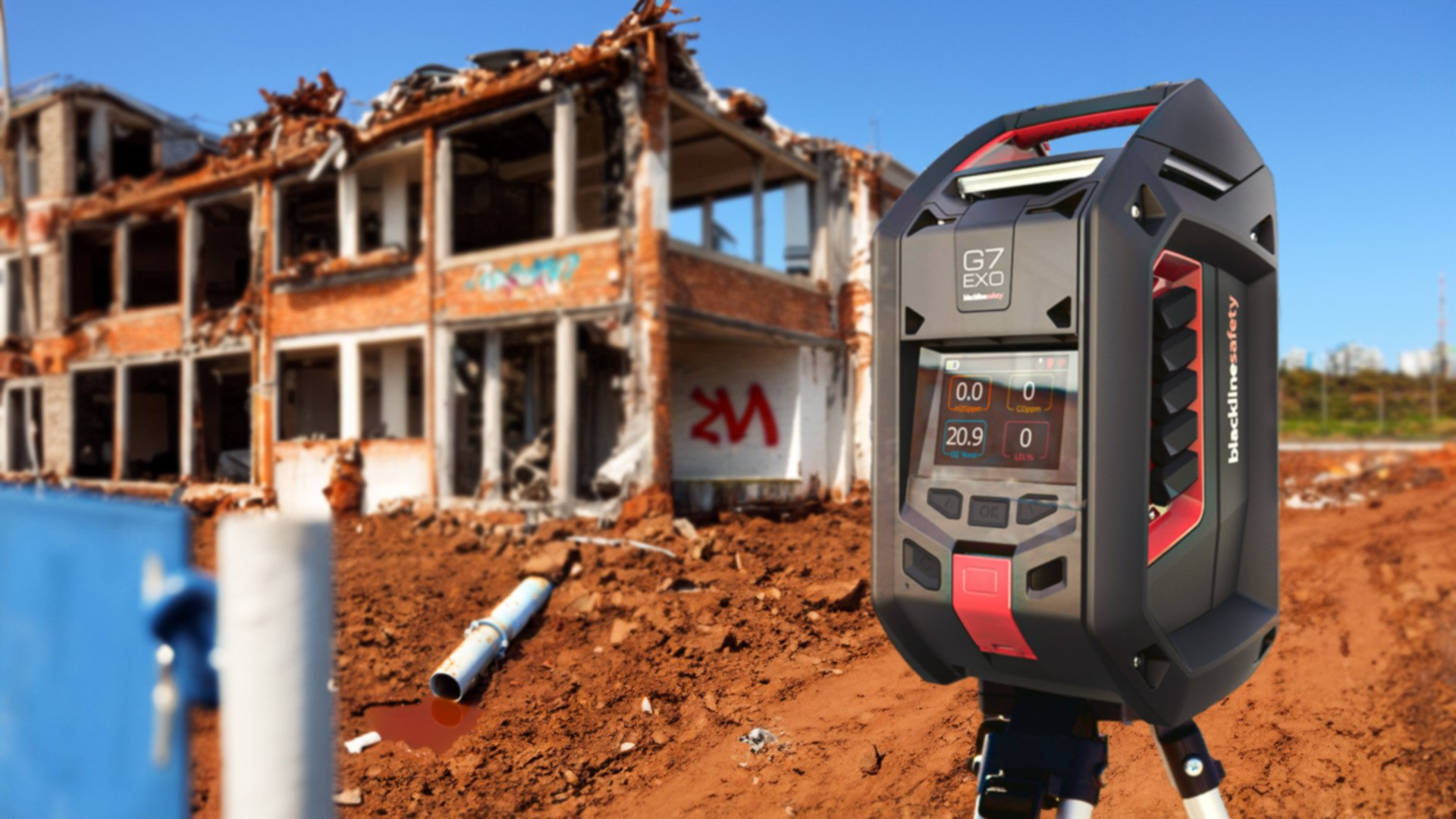What is asbestos?
Asbestos is the name of a group of natural-occurring minerals which contain fibres that, when they become airborne, can be inhaled and cause serious and fatal diseases such as mesothelioma, asbestos-related lung cancer, asbestosis and pleural thickening. These diseases do not affect individuals immediately, they can take years to develop. However, by the time they are diagnosed, it is often too late to do anything to help.
There are six types of asbestos, commonly categorised by colour names: Green, red, yellow, white, grey and blue. White (Chrysotile), brown (Amosite) and blue (Crocidolite) asbestos are the three types of asbestos commonly found in UK buildings today. In 1989, blue and brown asbestos were banned in the UK. Both were known to be more hazardous forms of the substance. The UK then banned the importation, supply and use of all asbestos in 1999. Asbestos is now well-documented as a carcinogenic material, which has led to many other countries also banning its use.
Where is asbestos used?
During the 20th century, the UK imported and installed more asbestos per capita than any other country. Unfortunately, after decades of extensive use, many of Britain's buildings including schools and hospitals still have asbestos present within their construction. All buildings built or refurbished before 1999 have the potential to contain asbestos. The UK saw the heaviest use of the material just after the Second World War.
It is reported that six million tonnes of asbestos are still inside 1.5 million buildings in the UK including 80% of all schools and 94% of hospitals.
Ironically, asbestos was associated with safety because it was durable and resistant to heat, chemicals and corrosion. It was extensively used as a means of insulation for both heat and electrical sources and was popular for its low cost and strength.
Schools, universities and hospital premises often include building systems such as CLASP, which were constructed between 1945-1980. These buildings can have structural columns fire-proofed with Asbestos Containing Materials (ACMs). By the time the risks were known, asbestos had been used for all manner of applications, from the manufacturing of boilers to the painting of door frames in schools. Asbestos can still be found in the following common items:
- Lagging used as thermal insulation on pipes and boilers
- Asbestos-insulating board (AIB) is used for fire protection, thermal insulation, partitioning and ducts
- Ceiling tiles and floor tiles
- Cement roofing and guttering
- Textured coatings.
Undamaged, sealed materials are unlikely to release fibres and pose a minor risk. However, if materials holding asbestos are disturbed or start to deteriorate, asbestos fibres can be released into the air and breathed in by anyone working in or visiting these sites. As buildings that are subject to high levels of activity and daily footfall, they are at higher risk of inadvertent damage and accelerated deterioration and therefore require more regular review.
In March 2017, the DfE published guidance for schools on where asbestos may be located. HSE inspectors now focus on primary and secondary schools across England and Wales, to review how well leaders are managing the risks of asbestos and meeting their ‘duty to manage’ (DTM) requirements under Regulation 4 of the Control of Asbestos Regulations (CAR).
What are the long-term effects of asbestos in our infrastructure?
Schools and Universities
Five thousand people die every year from asbestos-related diseases in the UK, more than from road accidents. Over 280 schoolteachers have died from mesothelioma since the 1980s with a study showing that teachers are more than five times more likely to contract mesothelioma because they are exposed to increased risk from chronic low-level exposure at their place of work.
Other cases of mesothelioma included people who worked in schools as catering staff, maintenance and facilities staff, secretaries and teaching assistants and, of course, pupils in later life. In certain schools, it was seen that daily events such as slamming doors and bumping into pillars or walls could release up to 800 times more than the ambient levels.
Hospitals
Asbestos in healthcare is not a new issue. For as long as asbestos has been identified as a problem, money has been spent on removing it or managing its risk in hospitals and other healthcare premises. Similarly, in schools, daily events and wear on ageing hospitals can cause asbestos to be released providing unsafe working environments for healthcare professionals.
Identifying and removing asbestos
A parliament petition was recently raised to increase awareness of asbestos and to create a central register to identify where asbestos is still present in public buildings which include schools, universities, hospitals, and healthcare buildings. The aim is to log buildings known to contain asbestos and plan for safe removal over the next 40 years.
There is no accurate data on how much asbestos is contained within our buildings, figures can fluctuate. An approximate guide to the age of the building is the only parameter to help determine whether asbestos could typically be present.
Traditionally, asbestos surveying and detection has meant samples of suspected asbestos-containing materials being sent to laboratories for analysis. Collecting the sample itself involves a risk in terms of disturbing fibres, so the task should only be undertaken by fully trained personnel.
A licenced specialist should remove asbestos, but there are limited situations in which a licence isn't necessary. Because of the hazardous nature of asbestos insulating board (AIB), asbestos insulation and asbestos lagging, all work with these materials requires a licenced contractor.
Any employee who is likely to be exposed to asbestos during their work is legally required to receive information, instruction and training from their employer or duty holder.
Asbestos disposal is highly regulated, and contaminated materials and personal protective equipment must all be disposed of at a licenced site. When disposing of asbestos, it's standard practice to double-wrap all materials and mark the bags with warning labels.
Contractors and staff should avoid breaking asbestos up where possible, as this disturbance will lead to further exposure and contamination. Transporting waste asbestos requires a waste carrier's license. Anyone can obtain information from their local authority about how to safely and legally dispose of asbestos.
Monitoring solutions from Shawcity
Shawcity is pleased to offer the biggest advancement in asbestos safety management technology for decades from Alert Technology with the ALERT PRO range, the world’s only range of real-time airborne asbestos monitors and alarms.
ALERT PRO speciates between asbestos and non-asbestos fibres using patented light scattering technology and the paramagnetic properties of asbestos to deliver results with a 99% confidence level. 
Able to distinguish airborne asbestos from non-asbestos fibres, ALERT PRO provides the world’s first and only real-time alarm. Equally important is the intelligent information the unit captures and catalogues. Users have real-time access to time-stamped particle and fibre counts, asbestos warnings and alarms, GPS tracking, and personalized sampling/project information. Key safety information and alarms are available directly from the unit with more detail available to view on the online portal ‘ALERT Connect’.
Not a replacement for existing methodology, the ALERT PRO complements asbestos testing by providing real-time data on airborne asbestos risk. All other forms of asbestos air monitoring provide a singular result for a sampling period with an average concentration for the entirety of the period but no detail about specific time periods.
The timestamped data provided by the ALERT PRO is a brand-new data set, not previously available in asbestos risk management. It provides users with the ability to determine peak risk, specific activities that have led to the release of fibres and understand what factors are increasing risk from asbestos.
Alert Technology launched their second-generation model in January 2023 – ALERT PRO 2000 Connected - which won the 2023 BSIF Product Innovation Award.
The ALERT PRO 2000 Connected model provides real-time data in the cloud, instantly available to anyone who has access to the ALERT CONNECT data portal. This sends immediate notifications of any asbestos releases to an unlimited number of users who are responsible for monitoring the site and can be based either locally or remotely.
ALERT PRO is in stock and available to hire or buy from Shawcity. For further information, click here.
To request a free demonstration of this ground-breaking technology, contact Shawcity on 01367 899553 or email: solutions@shawcity.co.uk.
Contains public sector information licensed under the Open Government Licence v3.0.
References:
https://www.hse.gov.uk/services/education/asbestos-faqs.htm
https://www.hse.gov.uk/asbestos/index.htm
extension://efaidnbmnnnibpcajpcglclefindmkaj/https://www.hse.gov.uk/pubns/guidance/em9.pdf
https://www.airtightonasbestos.uk/












